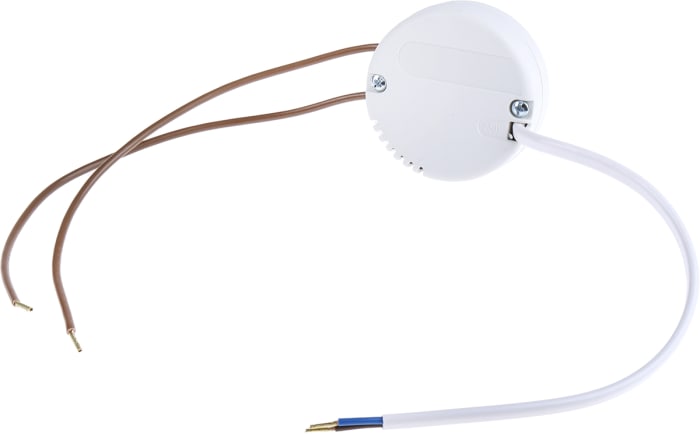Transformador de iluminación RS PRO, 220 → 240V ac, 11.6V ac, 20 → 70W, Electrónico

Documentos Técnicos
Especificaciones
Brand
RS ProTensión nominal primaria
220 → 240V ac
Tensión nominal secundaria
11.6V ac
Potencia Nominal
20 → 70W
Dimensiones
56 x 56 x 22 mm
Longitud
56 mm
Profundidad
56 mm
Profundidad
22 mm
Requisito de carga mínimo
20W
Temperatura Máxima
+80°C
Tipo
Electronic
Número de fases
1
Tipo de Terminación
Screw
Corriente nominal primaria
0.46A
Datos del producto
Low Voltage Lighting Transformers
Dimming Methods (where applicable):
Leading Edge:
The control device is either a thyristor or triac which blocks power until they are switched on by the control signal. At that point the current flows almost instantaneously and continues to flow until the end of the half cycle of the mains waveform. When the signal reaches zero, the device turns off and no more current is passed until it is triggered again. Turning the power on and off in this manner averages out creating a constant intensity level and by altering the precise trigger point over a period of time the lamp can be dimmed.
Trailing Edge:
Since this method of dimming uses transistor technology it is not limited to just switching, therefore current can be controlled gradually. Transistors can be programmed to pass current at the start of each half cycle, and gradually switch off later. This will control the full amount of power reaching the lamp without the side effects of a step increase in current.
Información de stock no disponible temporalmente.
Vuelva a verificar más tarde.
P.O.A.
1
P.O.A.
1
Documentos Técnicos
Especificaciones
Brand
RS ProTensión nominal primaria
220 → 240V ac
Tensión nominal secundaria
11.6V ac
Potencia Nominal
20 → 70W
Dimensiones
56 x 56 x 22 mm
Longitud
56 mm
Profundidad
56 mm
Profundidad
22 mm
Requisito de carga mínimo
20W
Temperatura Máxima
+80°C
Tipo
Electronic
Número de fases
1
Tipo de Terminación
Screw
Corriente nominal primaria
0.46A
Datos del producto
Low Voltage Lighting Transformers
Dimming Methods (where applicable):
Leading Edge:
The control device is either a thyristor or triac which blocks power until they are switched on by the control signal. At that point the current flows almost instantaneously and continues to flow until the end of the half cycle of the mains waveform. When the signal reaches zero, the device turns off and no more current is passed until it is triggered again. Turning the power on and off in this manner averages out creating a constant intensity level and by altering the precise trigger point over a period of time the lamp can be dimmed.
Trailing Edge:
Since this method of dimming uses transistor technology it is not limited to just switching, therefore current can be controlled gradually. Transistors can be programmed to pass current at the start of each half cycle, and gradually switch off later. This will control the full amount of power reaching the lamp without the side effects of a step increase in current.
